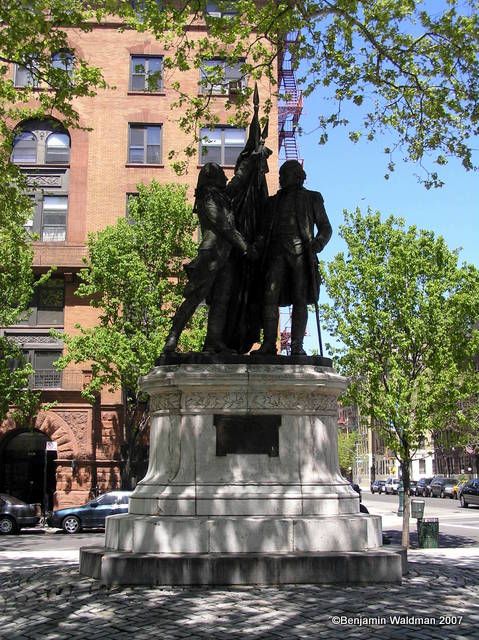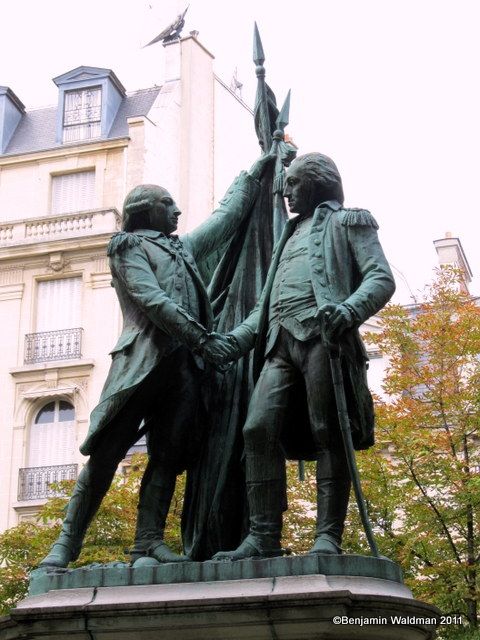NYC’s Forgotten ‘War on Christmas Trees’
Discover how an obscure holiday crackdown affects festive street vendors today!


Joseph Pulitzer, the editor of the New York World (whose New York City headquarters was the tallest building in the world when it was constructed and from which only one relic still remains) was very impressed with Frederic Bartholdi’s masterpiece, the Statue of Liberty. As a result, Pulitzer commissioned Bartholdi to create another statue, which would personify the Franco-American friendship. Bartholdi designed a statue consisting of George Washington and the Marquis de Lafayette with the French and American flags.

Bartholdi’s Lafayette and Washington next to Morningside Park

Bartholdi’s Lafayette and Washington in Paris’ Place Etats Unis
The statue was exhibited at The Champs Elysées Salon of 1892 and again at the Columbian Exposition in Chicago. The New York Times was not impressed with Bartholdi’s work (or Chicago for that matter):
“The sentiment of the group is irreproachable. The movement of Lafayette, repeating as it does the excellent work presented to the City of New-York… [in Union Square Park]… is full of life, energy, and natural grace. Not so with the Washington… A more serious objection to the group is the mistake M. Bartholdi has made in the relative size of the two heroes of the Revolution. Washington was a man of exceptional height that majesty of deportment which every one who saw him noted as a chief characteristic was not merely the result of his large and commanding mind, but was reinforced by the bigness of his physical make-up. Americans are good-humored, but they will not care to allow even so notable a sculptor as M. Bartholdi an artist’s license in this respect, because it violates too obviously the actual facts.”
The writer continues to harp on, in even greater detail, what would appear to be merely Bartholdi’s artistic license to create a more symmetric work of art. But at least The New York Times takes an equal opportunity approach to critiquing. “It is also obviously unfair to Chicago,” the article concludes ” to take advantage of the lack of knowledge of fine art on the part of her Mayor and foist on her another poor piece of sculpture.” Despite the bad press the statue found a worthy home.
Pulitzer offered the statue to the City of Paris, which accepted this gift. On December 1, 1895, the bronze sculpture was unveiled on Rue des États Unis. The dedication ceremony brought out a number of politicians and diplomats as well as Monsieur Bartholdi himself, and a representative of the Lafayette family. (For a complete list of those present, see The New York Times December 2, 1895).
Charles Baltzell Rouss—one of those larger than life 19th century figures—purchased a replica of Bartholdi’s statue, possibly as a memorial to his then recently deceased son. Rouss donated it to New York City, which graciously accepted the gift. On April 19, 1900, the statue was unveiled next to Morningside Park, in Washington-Lafayette Square (now Lafayette Square) which had been acquired by the City in 1887.
In 1900,The New York Times
had more positive things to say about the statue and its placement. ” The group has been erected in a position which displays it in a more conspicuous manner than the majority of the public statues of the city.” (For more on its dedication check out these two contemporary articles: New Statue is Unveiled, and C. B. Rouss’s Gift) Despite it being so well placed, it has widely been forgotten since it is so far off the beaten path.Subscribe to our newsletter